 |
 |
 |
| |
Shorter CD8 T Cell Subset Telomeres and Lower Proliferative:Senescent CD8 Ratio in People with Chronic/Latent Viral Coinfections
|
| |
| |
Reported by Jules Levin
IAS 2019 July 21-25 Mexico City
Anthony Hsieh1,2, BeherozeSattha1, NeoraPick3,4,5, Melanie C.M. Murray3,4,5, Hélène C.F. Côté1,2,4, for the CIHR Team in Cellular Aging and HIV Comorbidities in Women and Children (CARMA cohort)
1Pathology and Laboratory Medicine, University of British Columbia (UBC), Vancouver, BC; 2Centre for Blood Research, UBC; 3Oak Tree Clinic, BC Women's Hospital, Vancouver, BC
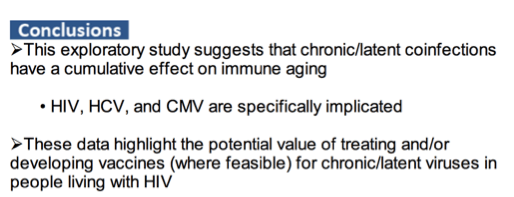
Program Abstract
Background: People living with cART-controlled HIV and coinfected with other chronic/latent viruses are at higher risk for age-related diseases compared to HIV-monoinfected individuals. We investigated how chronic/latent viral infections affect immune aging markers such as shorter proliferative CD8 (pCD8) T cell telomere length (TL) and lower proliferative: senescent CD8 (pCD8:sCD8) T cell ratio.
Methods: pCD8 and sCD8 T cells were FACS-sorted by CD28 using PBMCs from CARMA cohort participants. TL was measured in sorted subsets containing sufficient cell numbers for multiplex qPCR (∼58% of all specimens). Infection status for HIV, HBV, HCV, and CMV was determined by clinical history and/or serology. The chronic/latent viral burden was considered as 0, 1, 2, and ≥3 of any viruses.
Results: Among 189 participants, 33, 108, 10, 47, and 113 were positive for none (controls), HIV, HBV, HCV, and CMV (21 missing CMV data), respectively. Most (83%) HIV+ participants were undetectable and ∼45% of HCV+ participants were RNA-negative. Among participants with any viruses, 44, 66, and 25 had 1, 2, and ≥3 viruses, respectively. Higher number of viruses was univariately associated with decreasing pCD8:sCD8 ratio (P< 0.0001) and shorter pCD8 TL (P=0.004), with a noteworthy effect towards shorter sCD8 TL (P=0.077). Compared to no viruses, ≥1 virus was associated with lower pCD8:sCD8 ratio (P≤0.001) and shorter sCD8 TL (P≤0.047), while 2 viruses was associated with shorter pCD8 TL (P=0.005), independent of age and sex. Both HIV (β=-0.22, P< 0.001) and CMV (β=-0.26, P=0.036) were independently associated with a lower pCD8:sCD8 ratio, but HBV and HCV were not. Only CMV showed a significant independent association with shorter pCD8 TL (β=-0.28, P=0.036), with HCV infection ever as the second strongest signal (β=-0.18, P=0.069).
Conclusions: Living with a higher chronic/latent viral infection burden is associated with a poorer immune profile, likely related to persistent/repeated CD8 T cell stimulation. Our data highlight the potential value of treating and/or developing vaccines where feasible for chronic/latent viruses, including CMV, in people living with HIV.
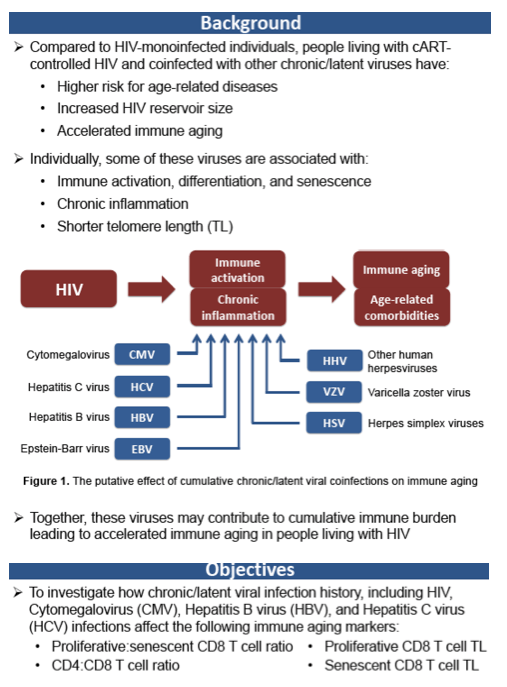
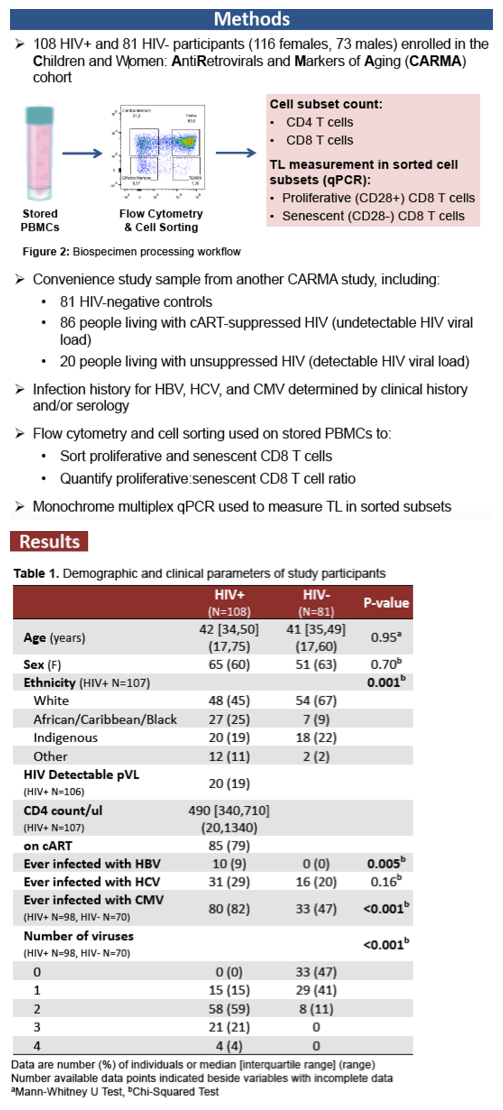
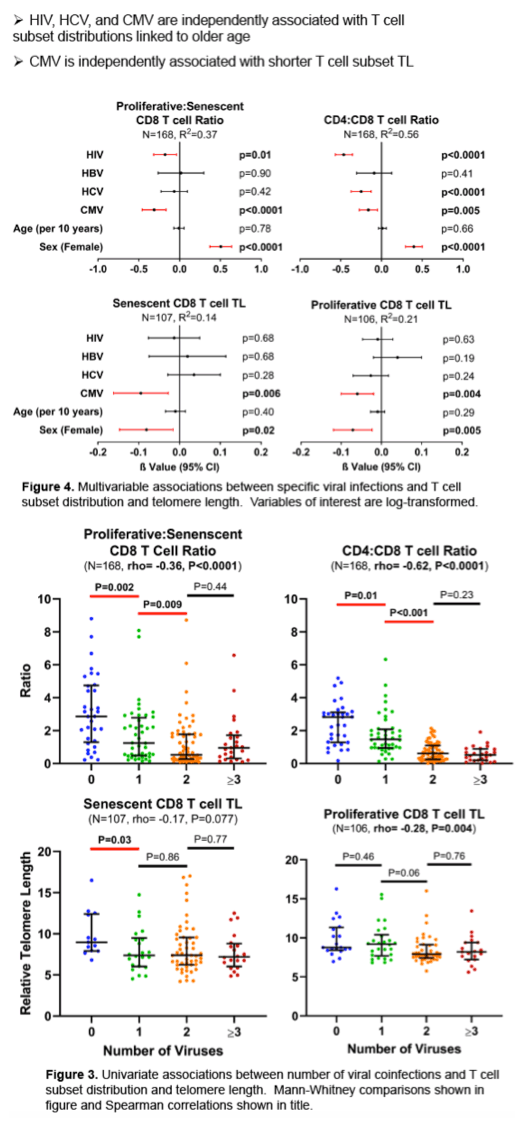
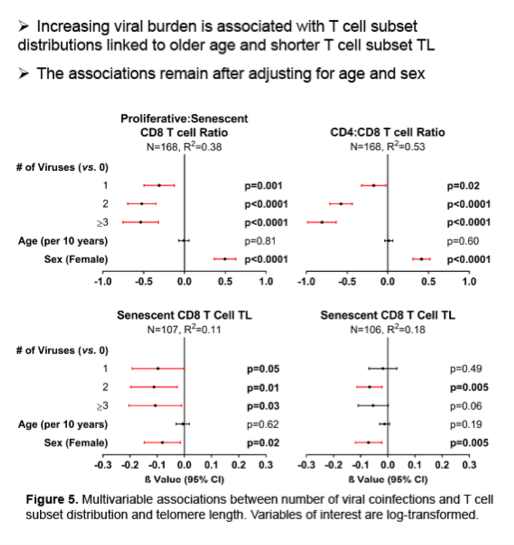
|
| |
|
 |
 |
|
|